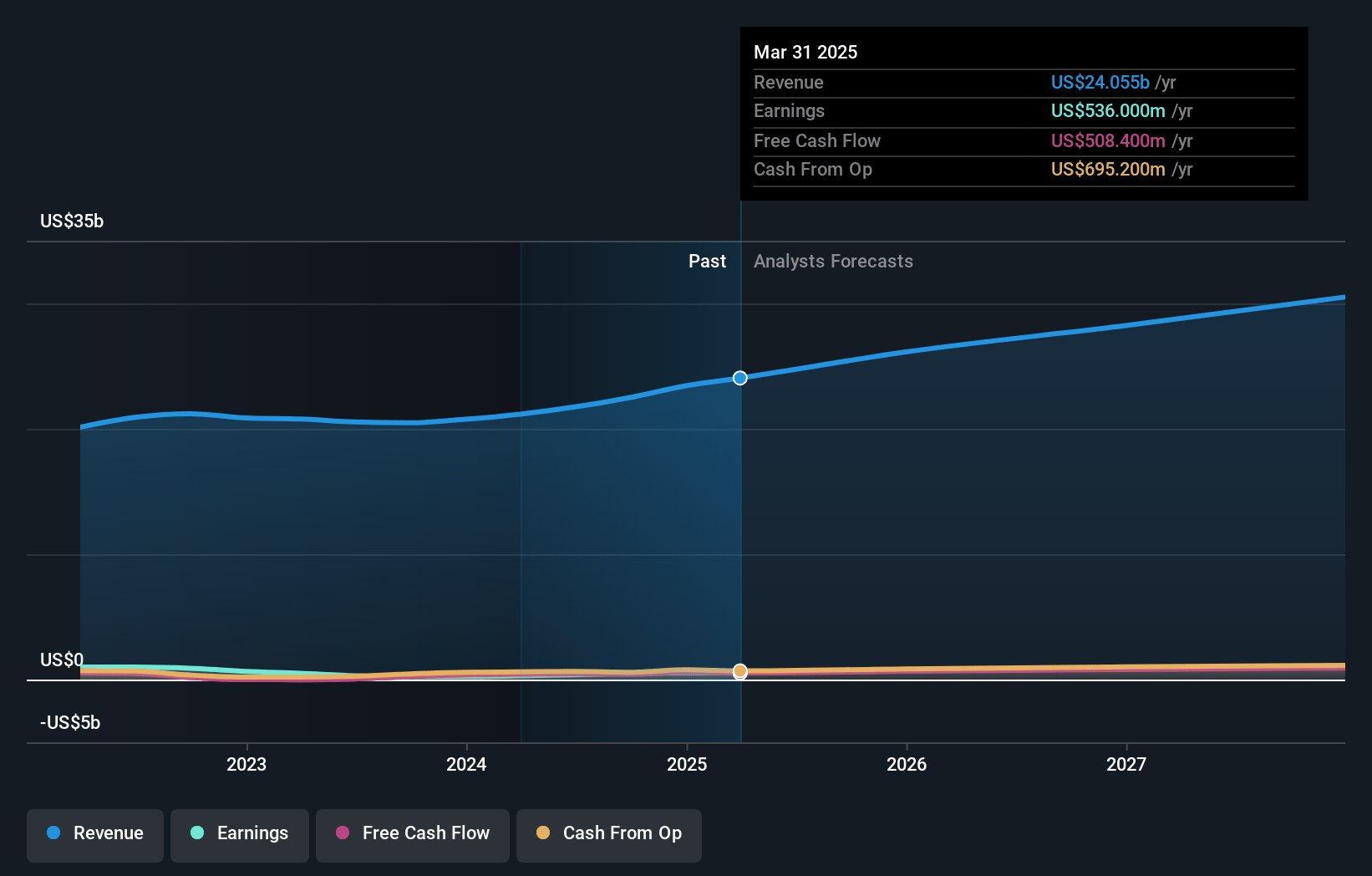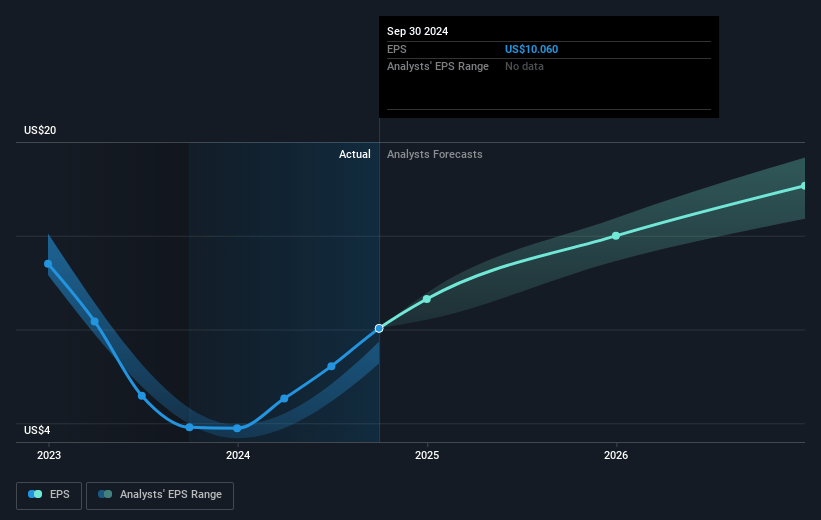Key Takeaways
- Strategic investments in AI and technology are set to boost project workflows, driving revenue growth and improving margins via cost efficiencies.
- As the largest debt intermediary globally, substantial revenue growth is anticipated from increased demand for real estate debt services.
- Macroeconomic challenges and strategic investments might slow JLL's revenue growth and affect capital market services due to client hesitation and regional market declines.
Catalysts
About Jones Lang LaSalle- Operates as a commercial real estate and investment management company.
- The company's strategic investments in technology and artificial intelligence are expected to enhance project management and property management workflows, which should drive revenue growth and potentially improve net margins through cost efficiencies.
- The global expansion of JLL's property management business and the growing trend of outsourcing are expected to drive resilient revenue growth, positively impacting both revenue and earnings.
- JLL's position as the largest debt intermediary in commercial real estate globally and the rising demand for real estate debt services point towards substantial future revenue growth in their debt advisory business.
- The anticipated recovery in the office sector, driven by return-to-office trends, stabilized leasing activity, and scarcity of quality assets, suggests a potential positive impact on office transactional revenues and overall margins.
- The company's strong cash position and capacity for strategic acquisitions could lead to enhanced revenue streams and improved earnings stability through targeted investments in resilient business lines.
Jones Lang LaSalle Future Earnings and Revenue Growth
Assumptions
How have these above catalysts been quantified?- Analysts are assuming Jones Lang LaSalle's revenue will grow by 6.6% annually over the next 3 years.
- Analysts assume that profit margins will increase from 2.2% today to 3.3% in 3 years time.
- Analysts expect earnings to reach $974.5 million (and earnings per share of $21.73) by about July 2028, up from $536.0 million today. The analysts are largely in agreement about this estimate.
- In order for the above numbers to justify the analysts price target, the company would need to trade at a PE ratio of 18.1x on those 2028 earnings, down from 22.0x today. This future PE is lower than the current PE for the US Real Estate industry at 31.8x.
- Analysts expect the number of shares outstanding to remain consistent over the next 3 years.
- To value all of this in today's terms, we will use a discount rate of 8.44%, as per the Simply Wall St company report.
Jones Lang LaSalle Future Earnings Per Share Growth
Risks
What could happen that would invalidate this narrative?- The dynamic and challenging macroeconomic environment, as well as policy volatility, could lead to clients delaying decision-making, potentially slowing down revenue growth and impacting both the resilient and transactional revenue streams.
- Potential decreases in global economic growth, as hinted by macroeconomic indicators, might affect JLL's revenue growth, given the company's historical correlation with GDP growth.
- Increased uncertainties surrounding future interest rate changes and economic outlook could negatively impact investor underwriting and transaction activities, directly affecting JLL's capital market services revenue and earnings.
- Competition and less favorable growth prospects in certain geographies, such as declines in certain regions of APAC, could result in reduced market volumes for JLL's investment sales and leasing activities, impacting overall revenue growth.
- The expense involved in strategic investments in technology and human capital could weigh on EBITDA performance, and if those investments do not generate the expected revenue growth, it could negatively impact net margins.
Valuation
How have all the factors above been brought together to estimate a fair value?- The analysts have a consensus price target of $295.0 for Jones Lang LaSalle based on their expectations of its future earnings growth, profit margins and other risk factors. However, there is a degree of disagreement amongst analysts, with the most bullish reporting a price target of $349.0, and the most bearish reporting a price target of just $235.0.
- In order for you to agree with the analyst's consensus, you'd need to believe that by 2028, revenues will be $29.2 billion, earnings will come to $974.5 million, and it would be trading on a PE ratio of 18.1x, assuming you use a discount rate of 8.4%.
- Given the current share price of $248.95, the analyst price target of $295.0 is 15.6% higher.
- We always encourage you to reach your own conclusions though. So sense check these analyst numbers against your own assumptions and expectations based on your understanding of the business and what you believe is probable.
How well do narratives help inform your perspective?
Disclaimer
AnalystConsensusTarget is a tool utilizing a Large Language Model (LLM) that ingests data on consensus price targets, forecasted revenue and earnings figures, as well as the transcripts of earnings calls to produce qualitative analysis. The narratives produced by AnalystConsensusTarget are general in nature and are based solely on analyst data and publicly-available material published by the respective companies. These scenarios are not indicative of the company's future performance and are exploratory in nature. Simply Wall St has no position in the company(s) mentioned. Simply Wall St may provide the securities issuer or related entities with website advertising services for a fee, on an arm's length basis. These relationships have no impact on the way we conduct our business, the content we host, or how our content is served to users. The price targets and estimates used are consensus data, and do not constitute a recommendation to buy or sell any stock, and they do not take account of your objectives, or your financial situation. Note that AnalystConsensusTarget's analysis may not factor in the latest price-sensitive company announcements or qualitative material.











